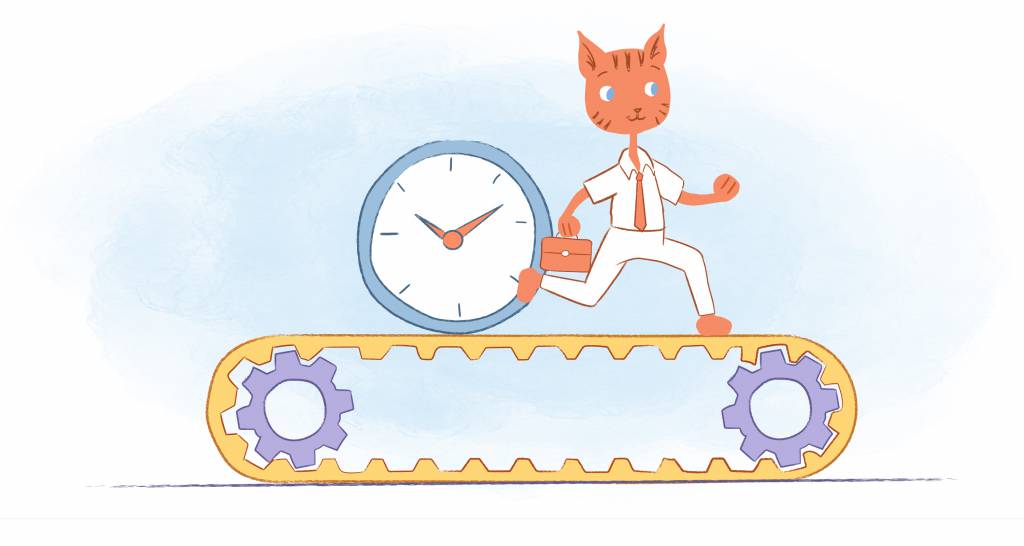

It’s estimated that about 36 percent of the workforce in the United States is freelancing. Pretty hard to believe right? Well that number is only growing and by 2027 experts are predicting that the majority of Americans will be freelancers.
As a freelancer you’re taking a calculated risk. Yes you get to be your own boss, pick your own hours, and can basically work from wherever you want. However you’re also giving up a stable income and benefits such as health care and paid time off. For some, that risk is well worth it. Those are people who have the entrepreneurial spirit to create opportunities for themselves. Those who prefer that job security, should probably stick to working their typical nine to five.
If you’re interested in freelancing full time, there’s a lot you need to learn.
Here are six things you should know before jumping into a full time freelance career
You will struggle financially at times
As a freelancer your workload is often inconsistent. Sometimes you’ll be overwhelmed with projects and have clients knocking at your door to start new work. Other months you’ll be struggling to find enough work to even get by. This is why freelancers will often have to dip into their savings in order to pay the bills.
When you’re just starting out, you need to be extra cautious about this. If you aren’t careful, a slow month can put you out of business. That’s why you need to be financially responsible at all times. Just because you had a great quarter, doesn’t mean you should go buy that new car you’ve been looking at for the last year. Focus on creating repeat clients and keeping your pipeline full to reduce the number of slow months.
If you’re a millennial, you’re far from alone
It’s always tough to jump into a new career. Especially if it involves jumping into it alone. If you’re a millennial however, you’re in luck. It’s estimated that 47 percent of millennials are freelancers, which is higher than any other generation.
Whether they’re freelancing full-time or moonlighting a startup, more young people are picking up extra work to earn an extra income. The unfortunate truth is, if you’re a millennial you’re probably going to need more than your nine to five salary to truly build wealth.
Freelance projects don’t need to be one time
Traditionally when people think about freelance projects, they think about quick one-time projects offered by startups and small businesses. Well, that trend is beginning to change as companies are beginning to integrate freelancers into their core business operations.
What does this mean for you? Well it can be good or bad. One of the biggest pluses of being a freelancer is that you get to dictate your schedule and workload. If you integrate into a larger business, that’ll probably mean you have to sacrifice a bit of that freedom.
The important thing to note here is that you can engage in longer projects if need be. Sometimes these projects can be as long as 6-months to a year. If you’re a freelancer simply interested in steady work, this could be a good approach. Keep in mind, these projects likely won’t demand your full-time attention.
Get cozy with rejection
Freelancers often need to work with several clients at a time in order to keep a steady cash flow. That said, you need to be getting in front of as many as possible. Because of this, freelancers experience rejection more often than most. Obtaining clients in freelancing is basically like sales. If you have any friends or family who work in sales, they will tell you a thing or two about rejection.
The key is to not take it personally. Often times it comes down to cost. Either your prices are too high or there is a competitor who’s price is more favorable compared to their skill level. You need to remember you can’t take rejection personally. In fact, you need to get cozy with it.
Your portfolio will close deals for you
One of the best marketing tools for freelancers is their portfolio. When you’re just starting out, this will obviously be tricky to put together. That said, you need to focus on kicking off projects that you’d be happy showcasing in your portfolio. It’s easy to want to jump on every opportunity that comes your way. If you engage in a project that never gets completed, you may have gotten paid for your work but you don’t have anything to show for.
Be very selective with who you work for and what kind of projects you build. For example, let’s say you’re a mobile app developer. Instead of building an app for any random person, try to build an app for an entrepreneur who’s looking to build a successful business around the product. Once you finish development and your client then decides to launch their application, you’ve then successfully added your first portfolio project. The more successful the application becomes, the more credibility you will have as a mobile developer.
You’ll need to build a community
When you choose to be self employed you need to focus on building a supportive community around you. Whether the community is full of other freelancers, past clients, or both it’s important to have people to fall back on for support, resources, and accountability.
Often times you can find preexisting communities depending on where you reside. If possible, try to work from a co-working space like WeWork where you can work alongside fellow freelancers every day. These co-working spaces also put on tons of networking events so you can always stay in the mix if need be!
At the end of the day, freelancing certainly isn’t for everyone. The points above are definitely not everything you should know before jumping into a freelance career. However, if you’re looking to get started make sure you take note of the six things mentioned above.











Angela Ruth
My name is Angela Ruth. I aim to help you learn how Calendar can help you manage your time, boost your productivity, and spend your days working on things that matter, both personally and professionally. Here's to improving all your calendars and becoming the person you are destined to become!